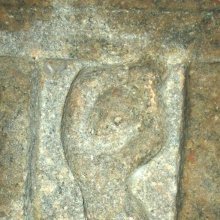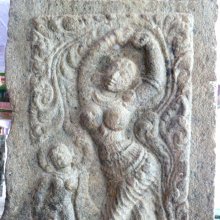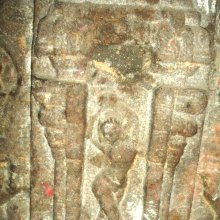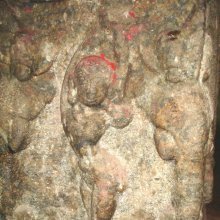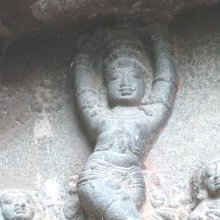Urdhvamandali, Urdhva-mandali, Ūrdhvamaṇḍalī: 2 definitions
Introduction:
Urdhvamandali means something in Hinduism, Sanskrit. If you want to know the exact meaning, history, etymology or English translation of this term then check out the descriptions on this page. Add your comment or reference to a book if you want to contribute to this summary article.
Images (photo gallery)
In Hinduism
Natyashastra (theatrics and dramaturgy)
Source: Wisdom Library: Nāṭya-śāstraŪrdhvamaṇḍalī (ऊर्ध्वमण्डली) refers to a gesture (āṅgika) made with ‘dance hands’ (nṛttahasta), according to the Nāṭyaśāstra chapter 8. The hands (hasta) form a part of the human body which represents one of the six major limbs (aṅga) used in dramatic performance. With these limbs are made the various gestures (āṅgika), which form a part of the histrionic representation (abhinaya).
Source: archive.org: Natya ShastraŪrdhvamaṇḍalī (ऊर्ध्वमण्डली).—A type of gesture (āṅgika) made with dance-hands (nṛttahasta);—(Instructions): The two hands to have circling movement near the upper region (i.e. the upper part of the body). The Dance-hands are to be used in forming Karaṇas.

Natyashastra (नाट्यशास्त्र, nāṭyaśāstra) refers to both the ancient Indian tradition (shastra) of performing arts, (natya—theatrics, drama, dance, music), as well as the name of a Sanskrit work dealing with these subjects. It also teaches the rules for composing Dramatic plays (nataka), construction and performance of Theater, and Poetic works (kavya).
See also (Relevant definitions)
Partial matches: Urdhva, Mandali, Mantali.
Starts with: Urdhvamandalin.
Query error!
Full-text: Nrittahasta.
Relevant text
Search found 1 books and stories containing Urdhvamandali, Urdhva-mandali, Ūrdhva-maṇḍalī, Ūrdhvamaṇḍalī; (plurals include: Urdhvamandalis, mandalis, maṇḍalīs, Ūrdhvamaṇḍalīs). You can also click to the full overview containing English textual excerpts. Below are direct links for the most relevant articles:
